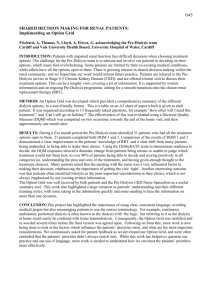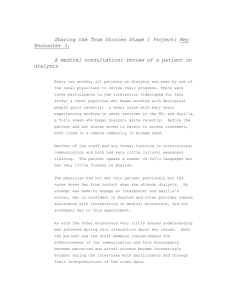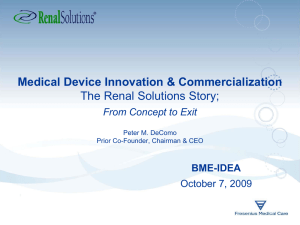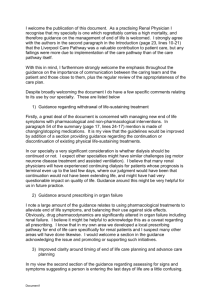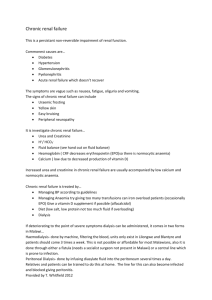Patient involvement within Renal Research Department Hull and
advertisement
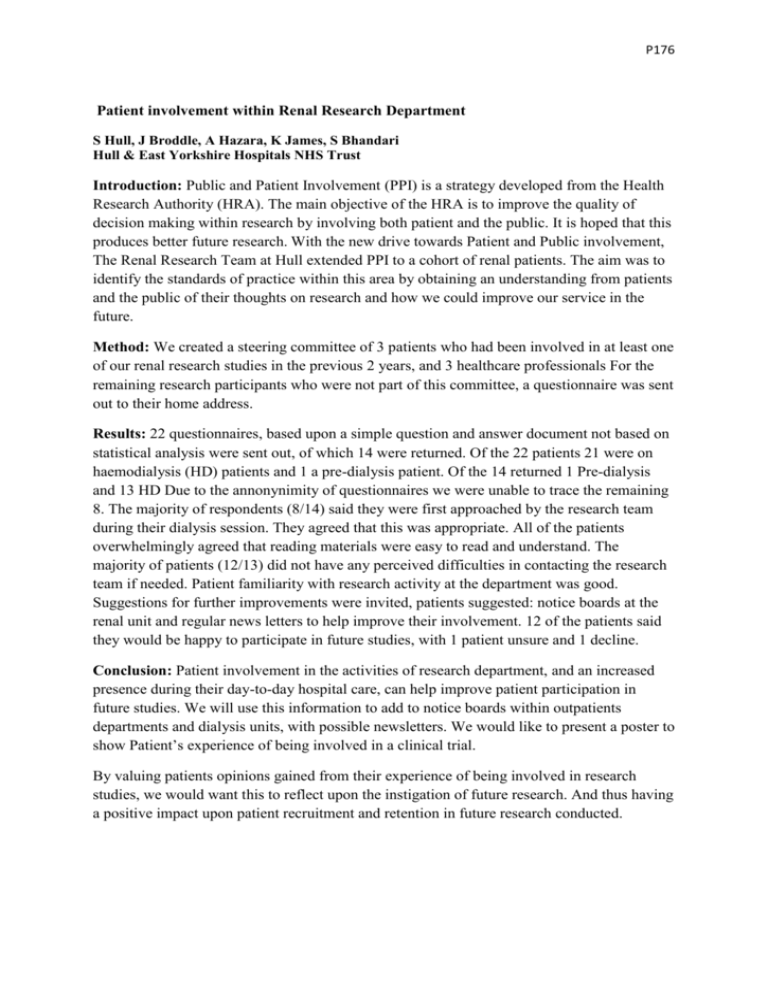
P176 Patient involvement within Renal Research Department S Hull, J Broddle, A Hazara, K James, S Bhandari Hull & East Yorkshire Hospitals NHS Trust Introduction: Public and Patient Involvement (PPI) is a strategy developed from the Health Research Authority (HRA). The main objective of the HRA is to improve the quality of decision making within research by involving both patient and the public. It is hoped that this produces better future research. With the new drive towards Patient and Public involvement, The Renal Research Team at Hull extended PPI to a cohort of renal patients. The aim was to identify the standards of practice within this area by obtaining an understanding from patients and the public of their thoughts on research and how we could improve our service in the future. Method: We created a steering committee of 3 patients who had been involved in at least one of our renal research studies in the previous 2 years, and 3 healthcare professionals For the remaining research participants who were not part of this committee, a questionnaire was sent out to their home address. Results: 22 questionnaires, based upon a simple question and answer document not based on statistical analysis were sent out, of which 14 were returned. Of the 22 patients 21 were on haemodialysis (HD) patients and 1 a pre-dialysis patient. Of the 14 returned 1 Pre-dialysis and 13 HD Due to the annonynimity of questionnaires we were unable to trace the remaining 8. The majority of respondents (8/14) said they were first approached by the research team during their dialysis session. They agreed that this was appropriate. All of the patients overwhelmingly agreed that reading materials were easy to read and understand. The majority of patients (12/13) did not have any perceived difficulties in contacting the research team if needed. Patient familiarity with research activity at the department was good. Suggestions for further improvements were invited, patients suggested: notice boards at the renal unit and regular news letters to help improve their involvement. 12 of the patients said they would be happy to participate in future studies, with 1 patient unsure and 1 decline. Conclusion: Patient involvement in the activities of research department, and an increased presence during their day-to-day hospital care, can help improve patient participation in future studies. We will use this information to add to notice boards within outpatients departments and dialysis units, with possible newsletters. We would like to present a poster to show Patient’s experience of being involved in a clinical trial. By valuing patients opinions gained from their experience of being involved in research studies, we would want this to reflect upon the instigation of future research. And thus having a positive impact upon patient recruitment and retention in future research conducted.

